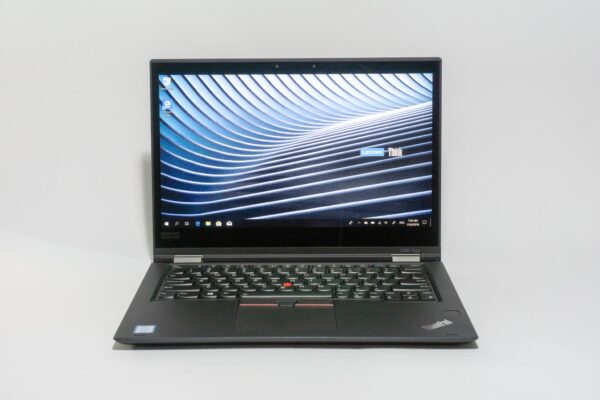
ThinkPad notebooks are legendary. The 360º flip feature of the Lenovo Yoga brand may also be familiar to many people. Put the two together, you’d pretty much already know what the new ThinkPad X380 Yoga is. Still, I continue to be impressed by the X380 Yoga when I saw it and started to use it the first time.
Lenovo’s latest two-in-one ThinkPad hybrid device is not entirely unfamiliar. There are other similar ThinkPad models, like the X270 Yoga that precedes it, as well as another X1 Yoga released this year. They take the standard ThinkPad business notebook design, give it a touchscreen, make it flip 360º backward into a tablet, and then you have a ThinkPad Yoga. The X380 Yoga is all that, updated with specs you’d expect in 2018, save for a display resolution better Full HD, yet remains (surprisingly) affordably priced.
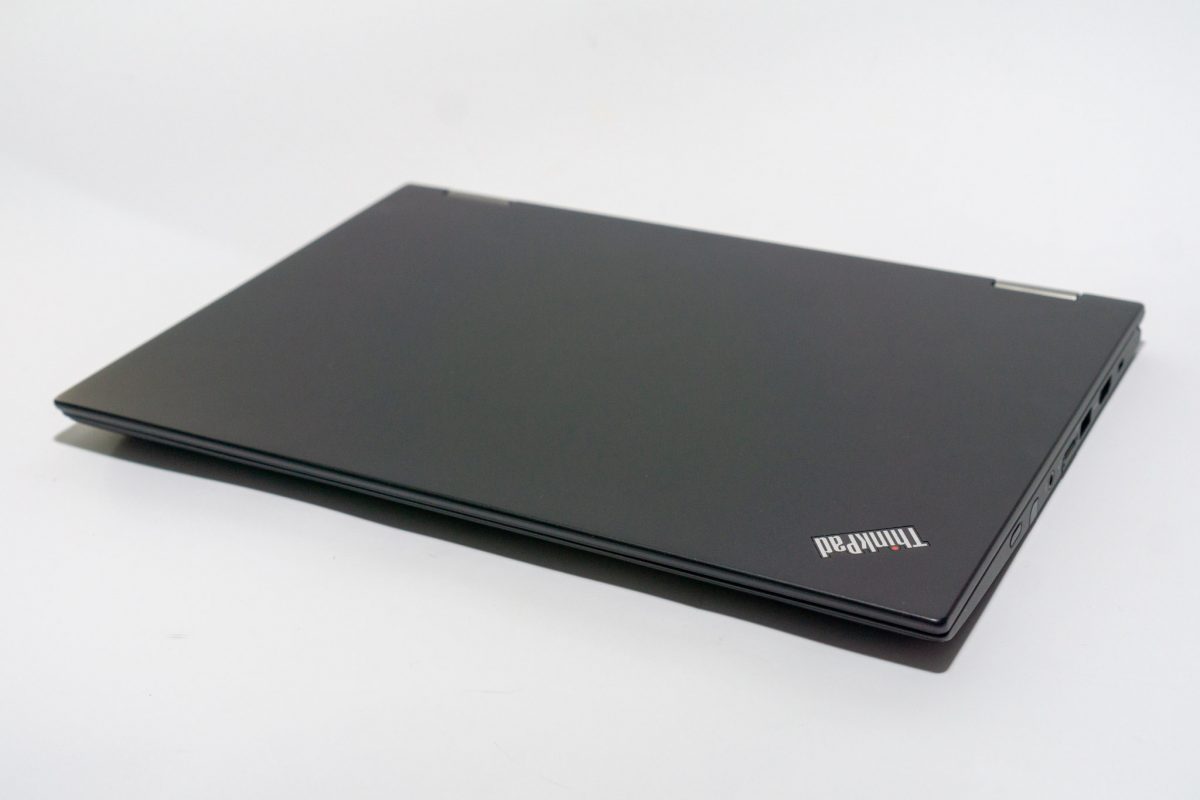
The ThinkPad X380 Yoga retains the timeless ThinkPad design that is instantly recognisable everywhere. Its black carbon-fibre body has a premium soft-touch finish, ThinkPad logo in the top-left of the lid with a lighted red dot, and arguably the best keyboard you’d ever find on a notebook. The X380 Yoga looks every bit like a serious business workhorse, though one with a few extra tricks up its sleeves.
With dimensions of 313.5 x 222.2 x 18.2 mm and weighing 1.4 kg, the X380 Yoga is quite portable and easy to bring around. The chassis feels very solid and rigid. There’s no give for flimsiness anywhere, and while you shouldn’t ill-treat your hardware, the X380 Yoga feels like it doesn’t need extra careful handling like some other more fragile notebooks.
Good to know too that the X380 Yoga is MIL-STD-810G tested against humidity, extreme temperatures, vibration and high altitude.
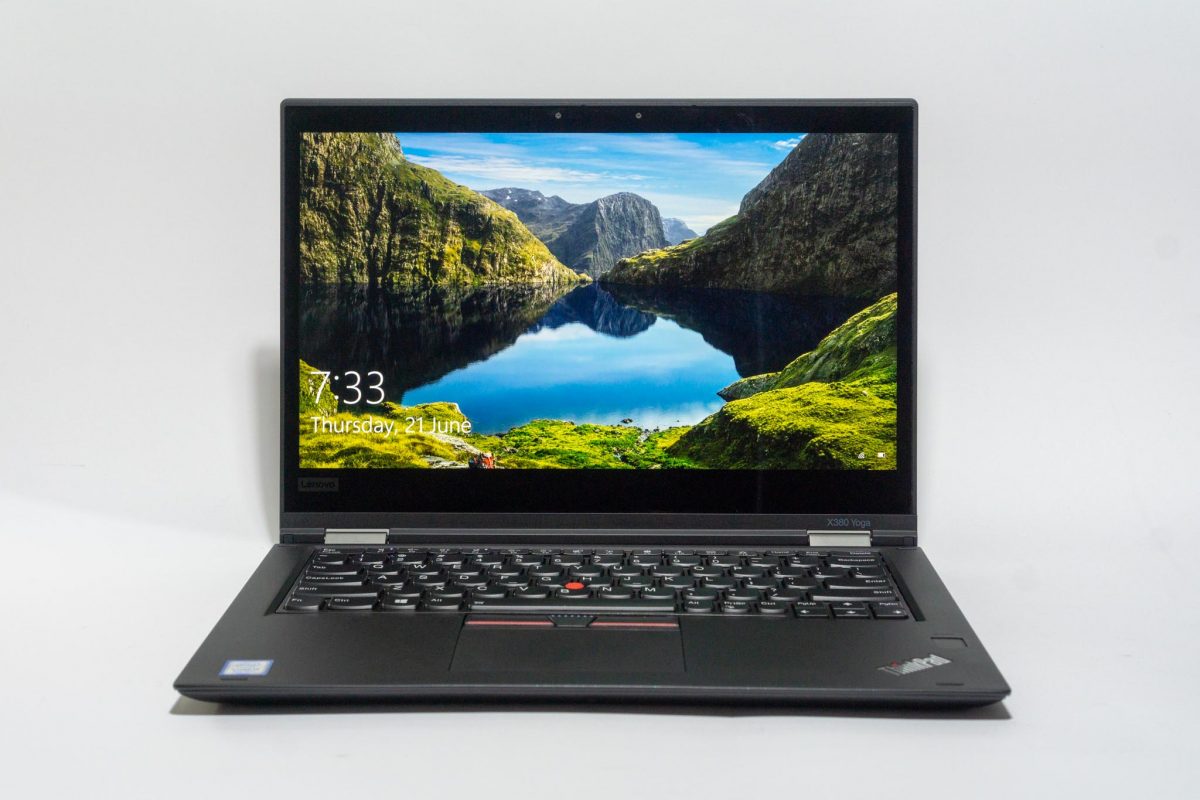
There’s quite a bit of bezel space all around the 13.3-inch screen. Less bezel is better, of course, but being a business notebook, this isn’t too much to raise any objections. All that space allows Lenovo to put the 720p webcam there, along with an optional IR camera for Windows Hello logins. Business users probably need to video-conference, and a nose-cam isn’t going to look professional at all.
I am a little disappointed that the X380 Yoga has no option for a higher-resolution display than Full-HD. However, when I saw this display, I was totally wowed. In fact, I almost thought for a while that perhaps I didn’t need QHD and upward resolution after all. The X380 Yoga uses an IPS panel that is very sharp and crisp. Its colours are very vivid, and in fact covers 113% of sRGB colour gamut. Add to that the anti-reflective coating on the glossy screen, this display is very clear, with very deep backs and excellent contrast, and while you can’t expect reflections to be totally eliminated, they are clearly reduced.
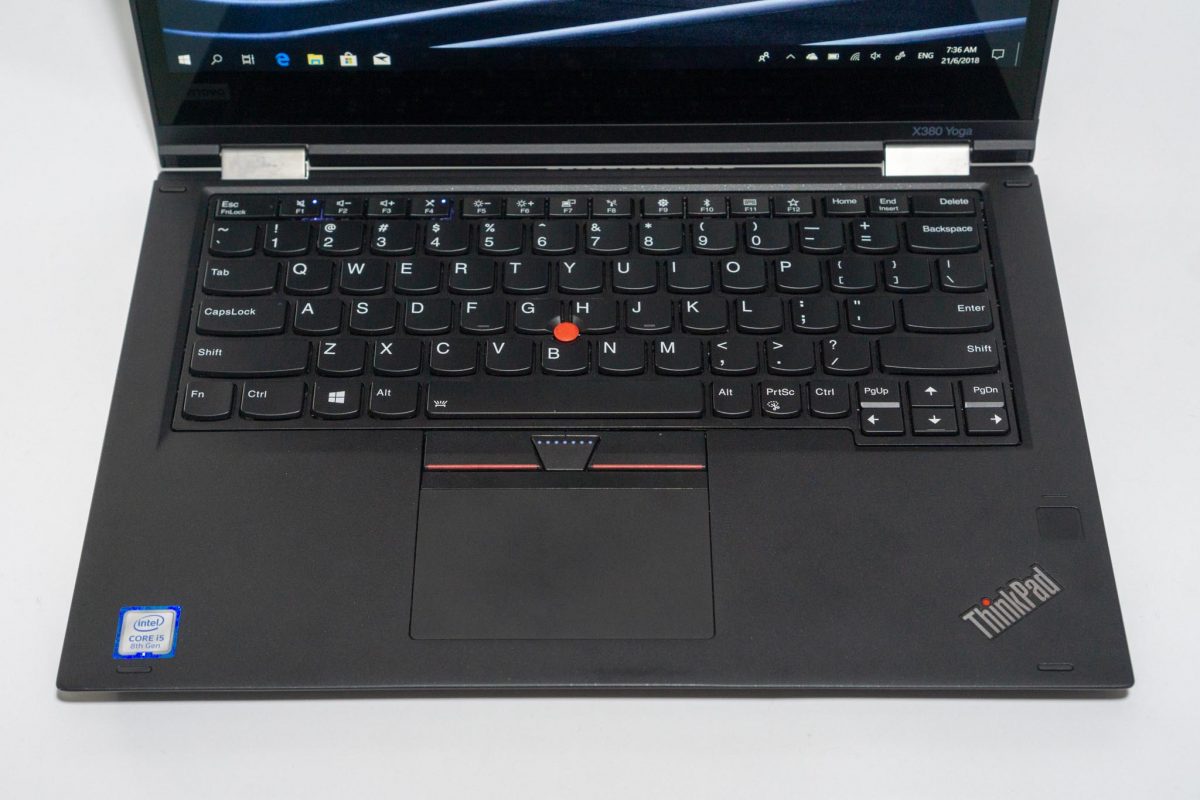
The X380 Yoga’s keyboard and TrackPoint is exactly everything that you’d expect of a ThinkPad. I am not a TrackPoint fan, so let me just quickly mention that the nub you get on the X380 Yoga is as good as on any other ThinkPad.
The keyboard, similarly, is pretty much the gold standard, at least in my books. They have superb 2.0 mm travel, excellent tactile feedback, responsive, and very comfortable. The soft-touch material on the key caps feel very good too. The typing experience is simply amazing. The keyboard also has a soft backlight which is handy when you need to work in dimmer-than-normal conditions.
Below the keyboard, you’ll find the usual mouse buttons that are mostly meant to be used with the TrackPoint. The Windows Precision touchpad below that is excellent, but like most ThinkPads, its size is limited by the need to incorporate the buttons above for TrackPoint users.
There’s also a Windows Hello compatible fingerprint reader below the keyboard on the right side. This is a match-on-chip fingerprint reader, which means improved security because your fingerprint data doesn’t leave the chip. Fingerprint recognition speed is fast, and I never had any trouble logging in using my fingers.
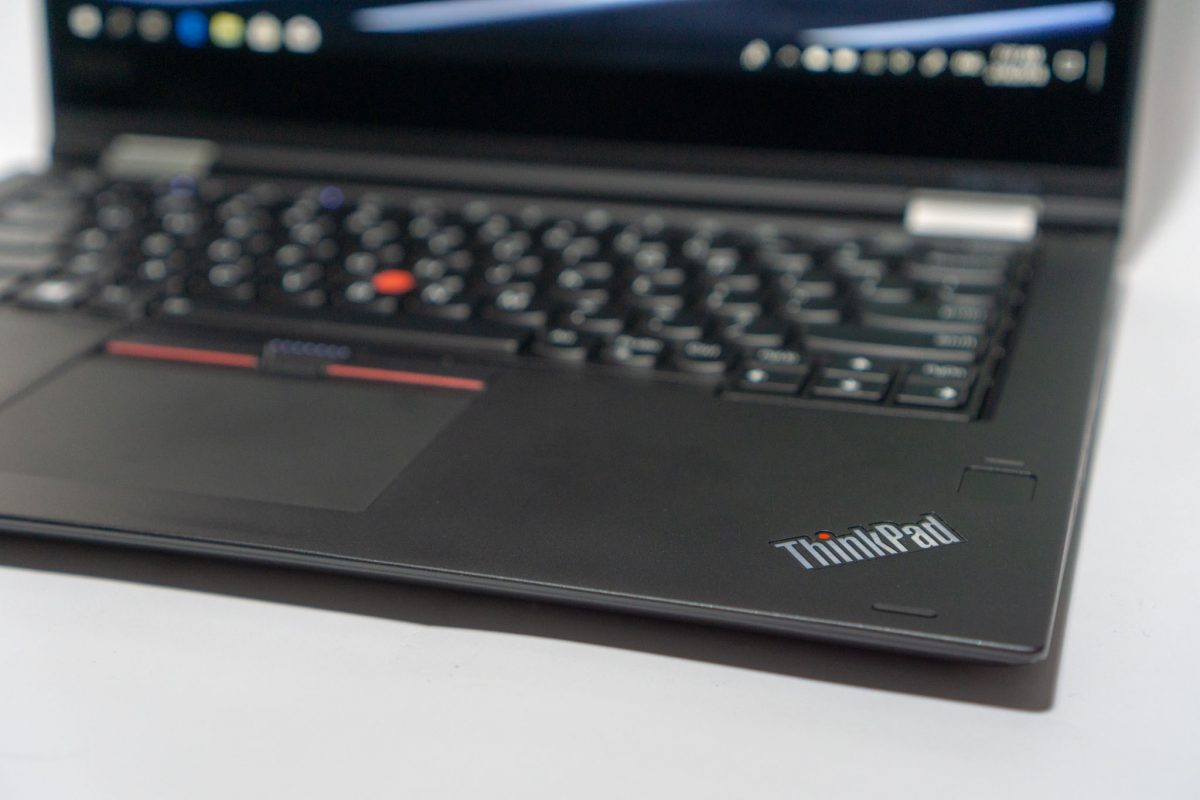
While we’re on the topic of security, the ThinkPad X380 Yoga has a dTPM security chip, i.e. a discrete Trusted Platform Module hardware separate from the main Intel processor. A TPM security chip stores encryption keys and other security information. Apart from dTPM 2.0, the X380 Yoga also supports FIDO, important features for business users.
The port selection on the ThinkPad X380 Yoga is reasonably good. On the left side, you’ll find a proprietary power connector (which is the same used in some other ThinkPad models), a USB 3.0 Type-C port with Thunderbolt 3, a proprietary mini Ethernet port which requires a dongle to use with a regular RJ45 Ethernet cable, and an always-on USB 3.0 Type-A port,
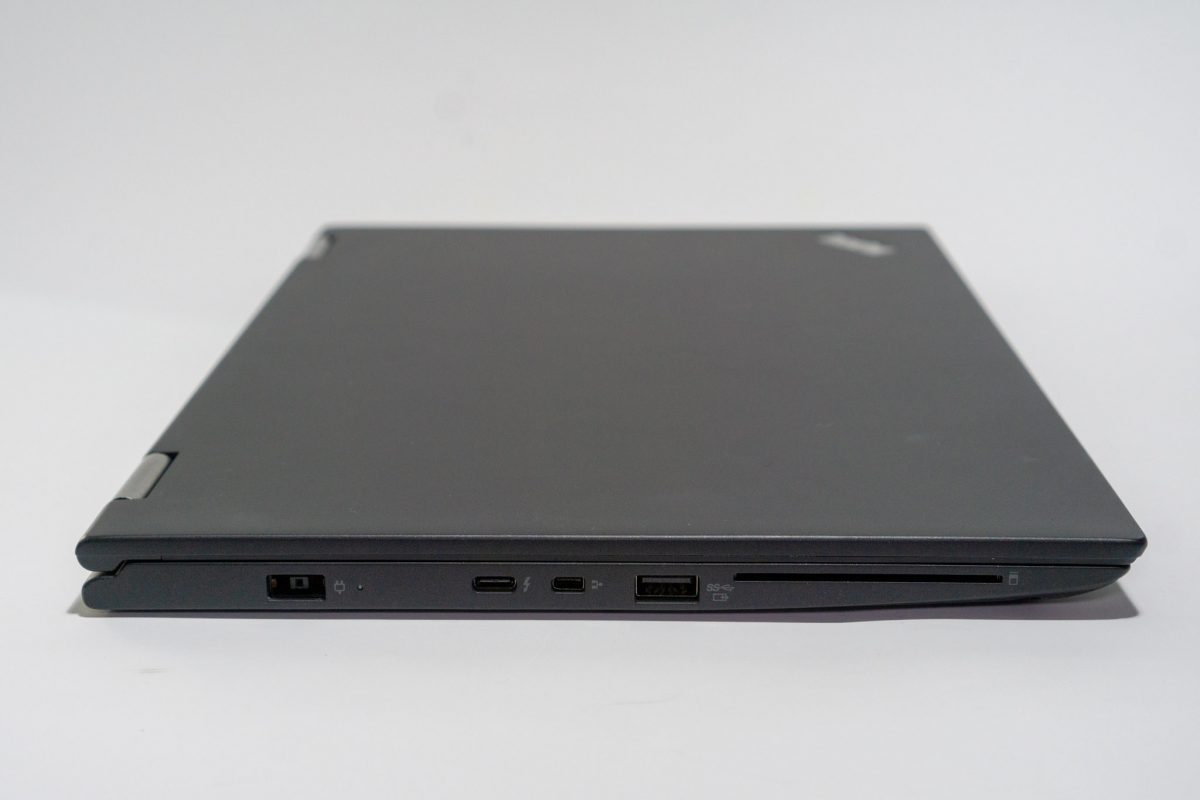
I hate having to deal with proprietary power supply bricks, and fortunately, you don’t have to with the Yoga X380. That USB Type-C port can be used to power up the notebook, and indeed, depending on configuration, the X380 Yoga can be supplied with a USB Type-C power brick.
Along the right side, you’ll find the power button, a really convenient storage slot for the ThinkPad Pen Pro, 3.5 mm audio connector, MicroSD card slot, another USB 3.0 Type-A port, an HDMI port, and a Kensington security slot.
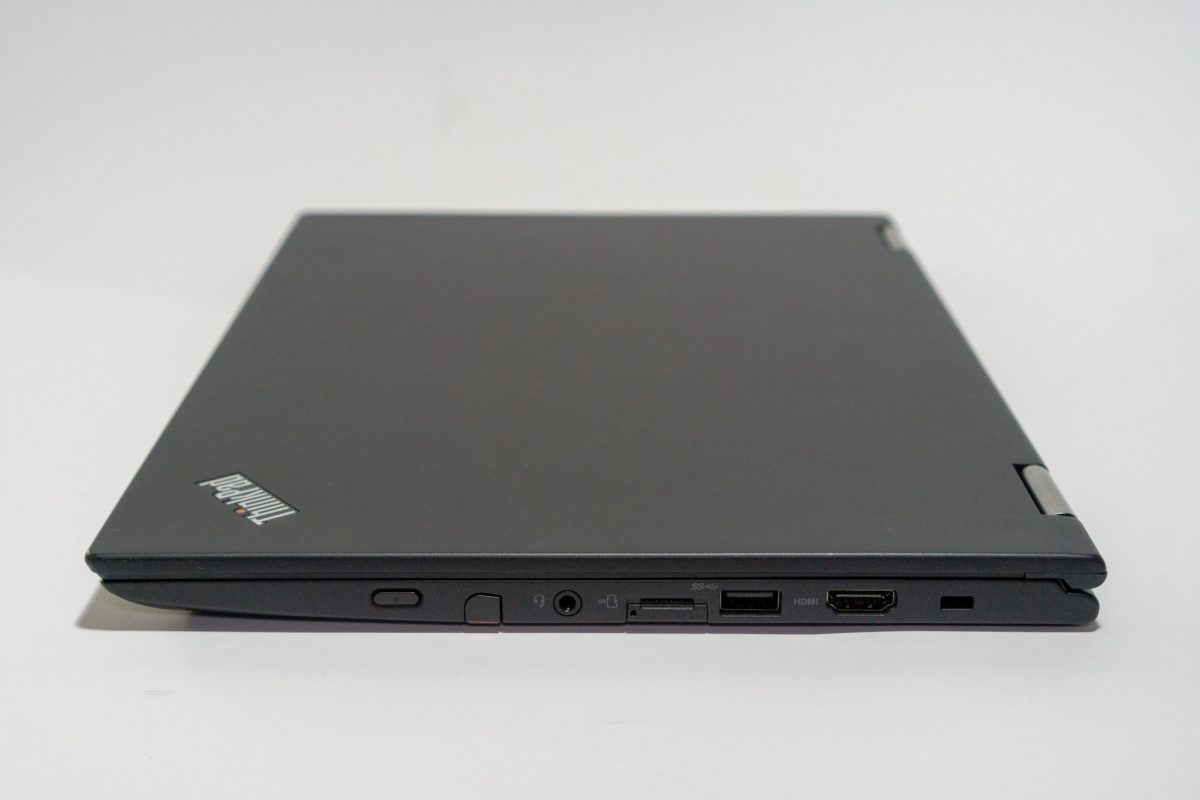
I would really like to have an extra USB Type-C port. In 2018 now, USB Type-C has really gotten quite common and having just one of it right available on the X380 Yoga may be a little limiting.
The ThinkPad X380 Yoga’s display isn’t just touch-enabled, it also supports pen input. The ThinkPad Pen Pro is included and as mentioned earlier, there’s a convenient slot to keep the pen when it’s not being used. That pen slot also charges the pen automatically, so you’ll never have to worry about replacing some obscure battery at the most inopportune moment.
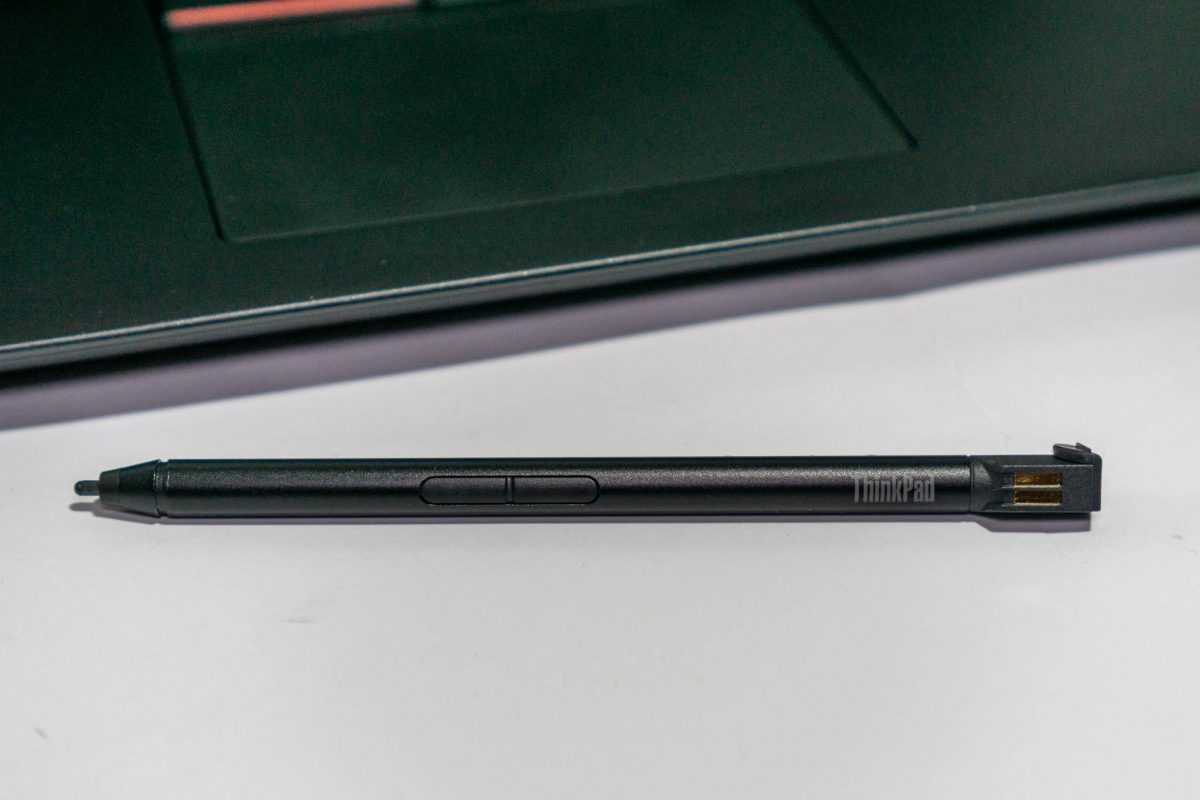
The ThinkPad Pen Pro supports 2048 levels of pressure and has two buttons on its barrel. It is a little too skinny for my liking. The pen works fine, but may not be comfortable if you need to use it extensively. I suppose some trade-off was needed here: too big a pen means it won’t have a slot in the notebook, or the notebook would have to be necessarily clunkier.
Speakers on the X380 Yoga is typical of what you’d expect of notebooks. It gets loud enough for use in a largish meeting room, which is perhaps all that most business users will ask for.
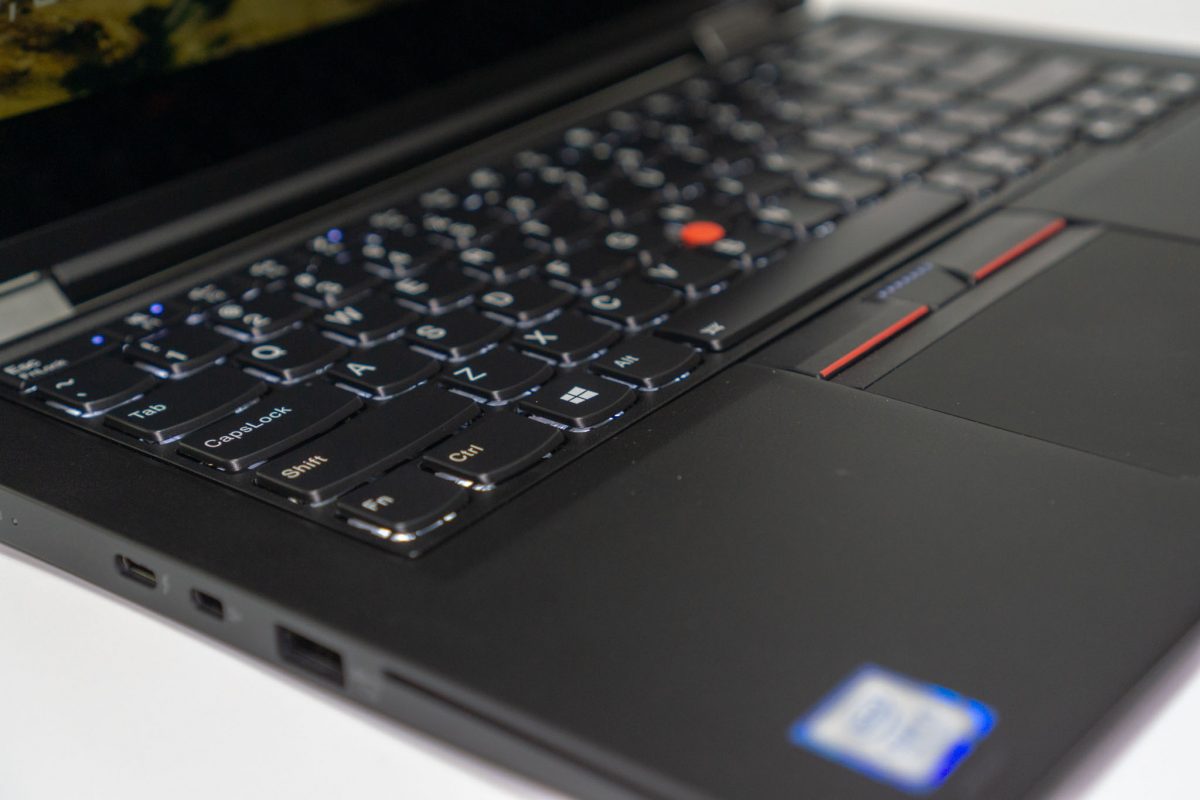
The Thinkpad X380 Yoga is a two-in-one convertible, and when you start to fold the screen over, you’ll see a neat trick it does with its keyboard. Compare the photo above and below, and notice how the keys retreat back to become flush with the body?
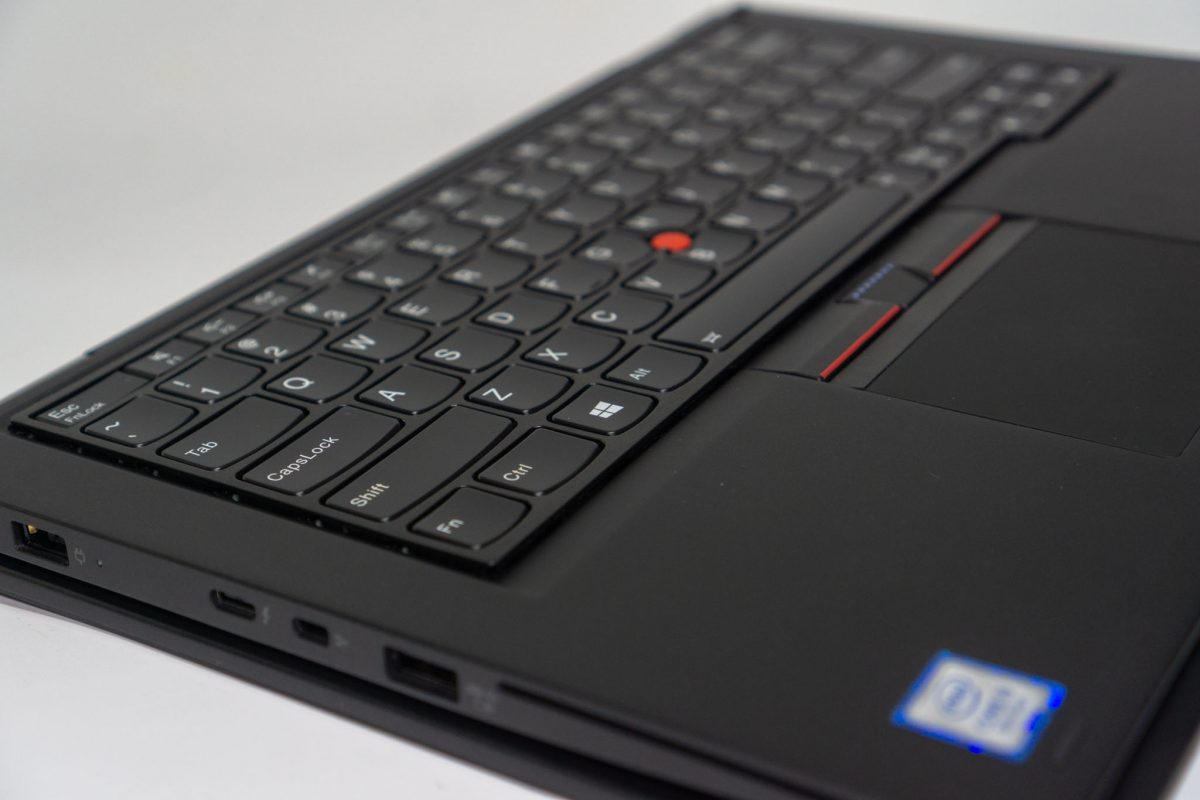
Most notebooks will automatically disable the keyboard once the screen is flipped over, so pressing the keys don’t send anymore inputs. But it still feels weird to feel the keys being pressed. The disappearing keyboard trick makes the X380 Yoga so much more comfortable to hold in tablet mode.
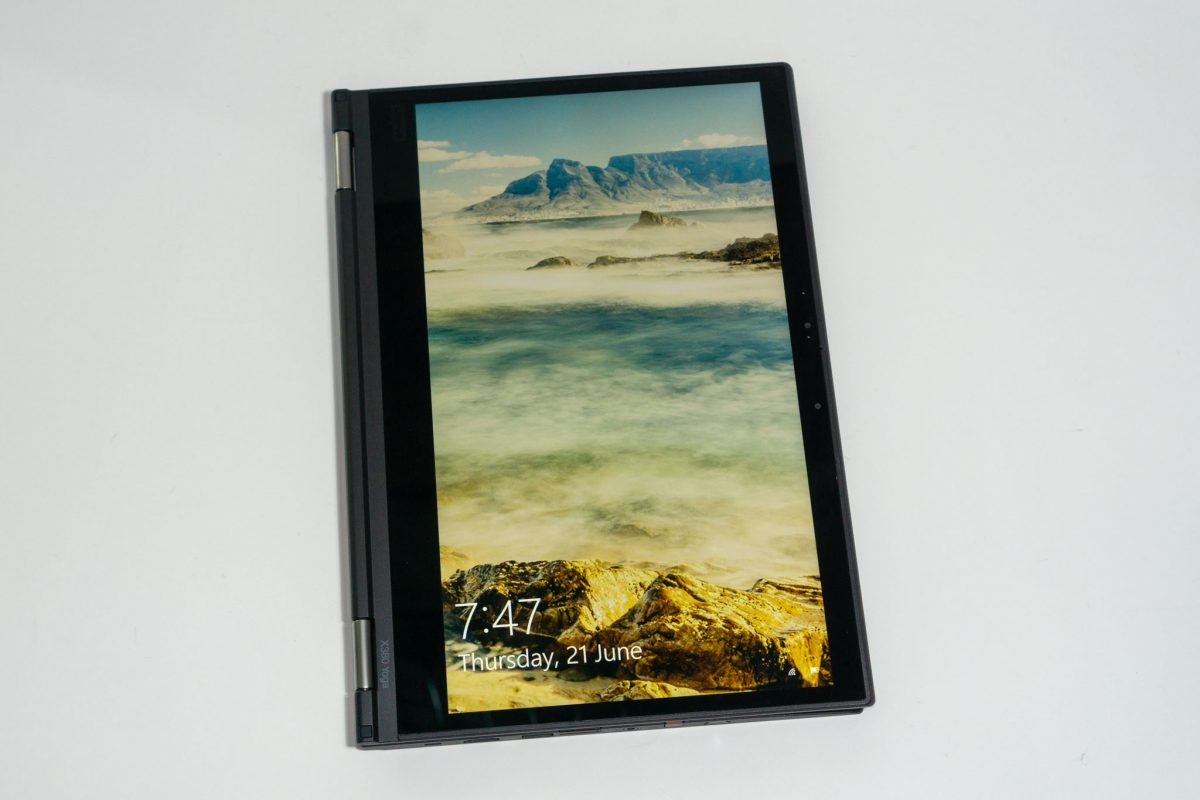
Tent mode and stand modes work well. It’s cool to have a business notebook transform into other modes when you’re not having to hammer away at Excel spreadsheets. Stand mode may make a good impression at your next small table meeting presentation too.
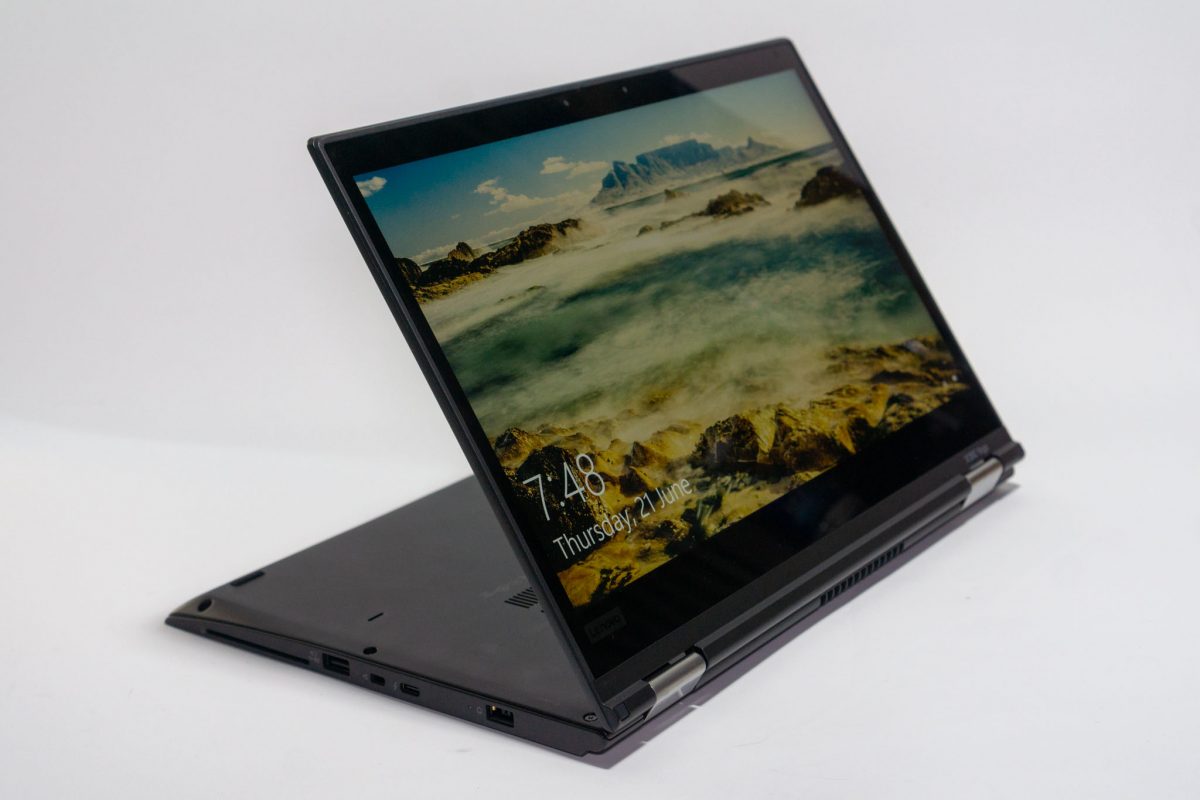
In fact, I find that in small meetings, when you don’t have or don’t want to use a projector for presentation, the ability to open the display to extreme angles is particularly useful. In this regard, I consider two-in-one hybrid devices as a valuable feature even for business users.
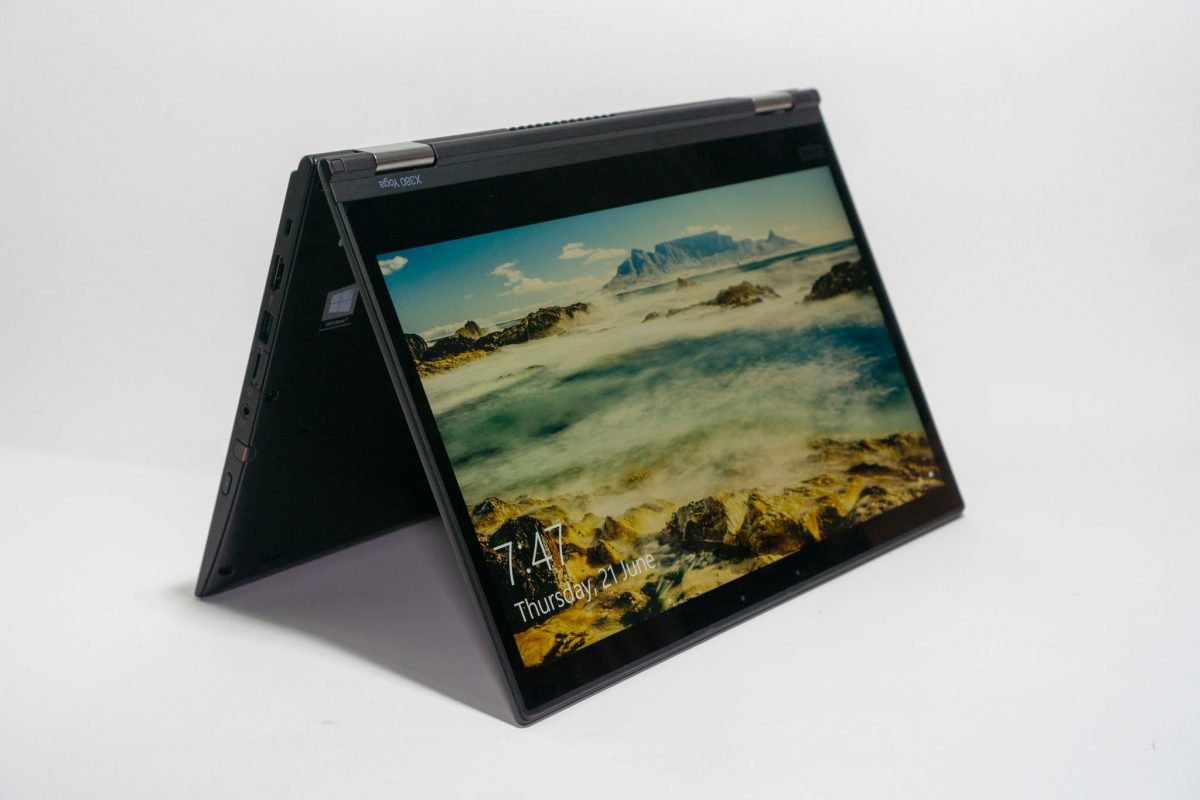
My review unit of the X380 Yoga is configured with an 8th generation Intel Core i5-8250U processor, 8 GB of DDR4 2400 MHz RAM, 256 GB Solid State Drive PCIe with OPAL 2.0, and Windows Hello IR camera. Lenovo offers many configuration options with the X380 Yoga, with processor options up to Core i7-8650U (with vPro) and a 16 GB memory option. Storage options can go up to 1 TB PCIe with OPAL 2.0, or down to 128 GB SATA3 Solid State Drive.
View Comment Policy